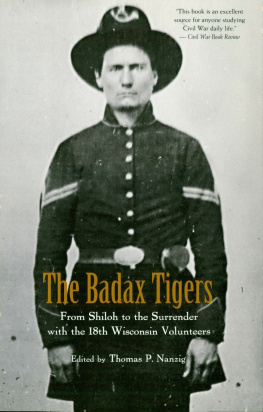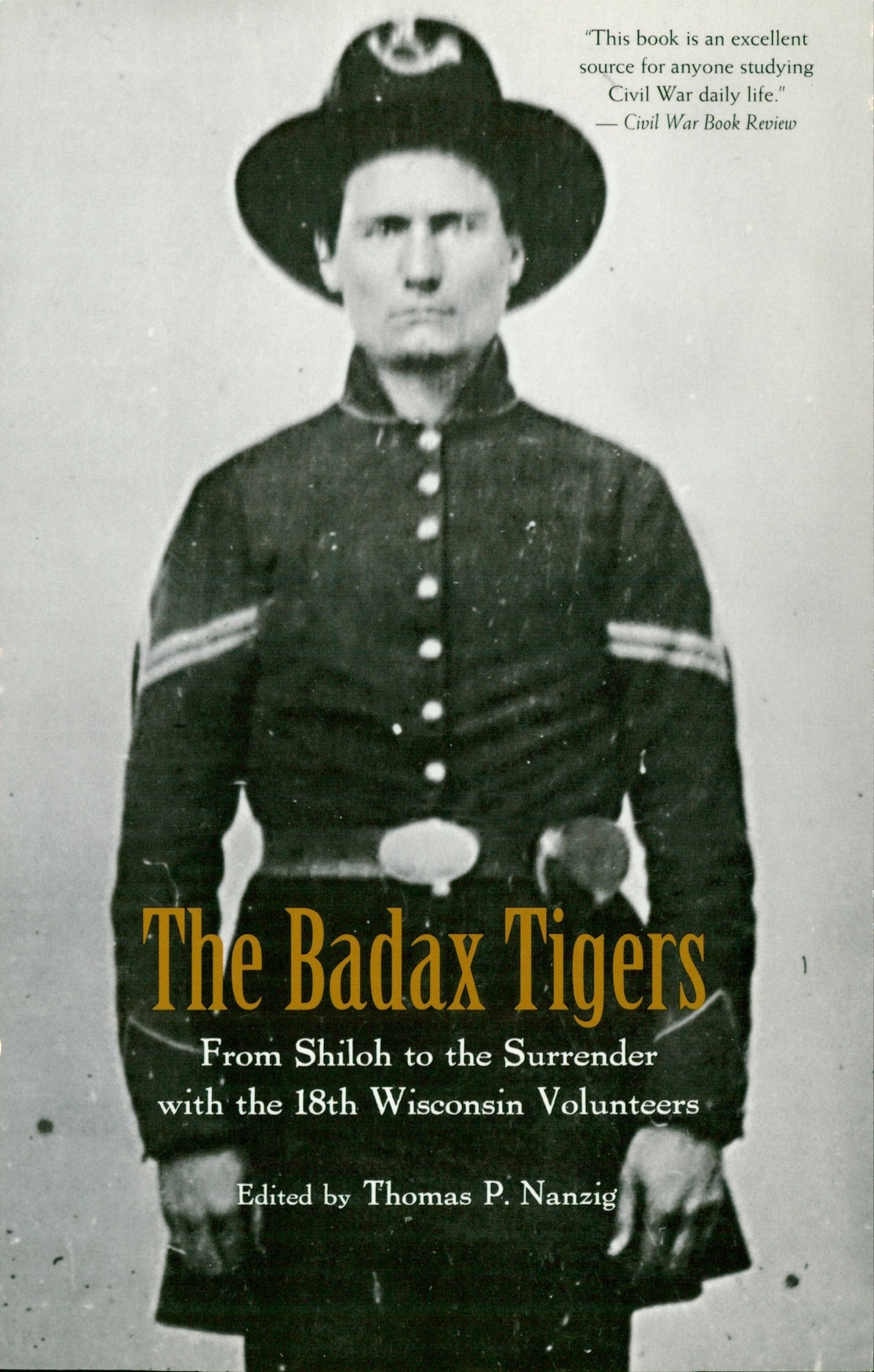Bibliography
Adams, George Worthington. Doctors in Blue. Baton Rouge: Louisiana State University Press, 1962.
Ambrose, Stephen E. Halleck: Lincolns Chief of Staff. Baton Rouge: Louisiana State University Press, 1962.
Ambrose, Stephen E. (ed.). A Wisconsin Boy in Dixie: Civil War Letters of James K. Newton. Madison: University of Wisconsin Press, 1961.
Andriot, John L. Population Abstract of the United States, vol. 1, tables. McLean, Va.: Andriot Associates, 1983.
Bailey Ronald H. Battles for Atlanta. Alexandria, Va.: Time-Life Books, 1985.
Barefoot, Daniel W. General Robert F. Hoke: Lees Modest Warrior. Winston-Salem, N.C.: John F. Blair, Publisher, 1996.
Barrett, John G. Shermans March through the Carolinas. Chapel Hill: University of North Carolina Press, 1956.
Bastian, David F. Grants Canal. Shippensburg, Pa.: Burd Street Press, 1995
Bearss, Edwin Cole. Vicksburg Campaign, vol. II: Grant Strikes a Fatal Blow. Dayton, Ohio: Morningside, 1986.
Boatner, Mark M., III. The Civil War Dictionary. New York: Vintage Books, 1991.
Bowers, Claude G. The Tragic Era. Cambridge, Mass.: Literary Guild of America, 1929.
Brown, Alonzo L. History of the Fourth Regiment of Minnesota Volunteers during the Great Rebellion 18611865. St. Paul, Minn.: Pioneer Press, 1892.
Cozzens, Peter. The Shipwreck of Their Hopes. Urbana: University of Illinois Press, 1994.
Cromie, Alice Hamilton. A Tour Guide to the Civil War. Nashville: Rutledge Hill Press, 1992
Cunningham, Edward. The Port Hudson Campaign. Baton Rouge: Louisiana State University Press, 1963.
Davis, William C. (ed.). The Confederate General, vols. 1, 3, and 6. Harrisburg, Pa.: National Historical Society, 1991.
Dickson, Paul. War Slang. New York: Pocket Books, 1994.
Dyer, John P. From Shiloh to San Juan. Baton Rouge: Louisiana State University Press, 1989.
Estabrook, Charles E. (ed.). Wisconsin Losses in the Civil War. Madison, Wis.: Democrate, 1915.
Faust, Patricia L. (ed.). Historical Times Illustrated Encyclopedia of the Civil War. New York: Harper & Row, 1986.
Grant, Ulysses S. Personal Memoirs of U.S. Grant, vol. 1. New York: Webster, 1885.
Hamilton, Virginia Van Der Veer. Seeing Historic Alabama. Tuscaloosa: University of Alabama Press, 1982.
Hickenlooper, Andrew. Our Volunteer Engineers, Sketches of War History, 18611865. Cincinnati: Ohio Commandery of Mollus, 1890.
Jones, Jenkin Lloyd. An Artillerymans Diary. Madison: Wisconsin History Commission, 1914.
Klement, Frank L. Wisconsin and the Civil War. Madison: Wisconsin Civil War Centennial Commission, 1963.
Lewis, Lloyd. Sherman: Fighting Prophet. New York: Harcourt, Brace, 1932.
Long, E. B. The Civil War Day by Day, An Almanac, 18611865. Garden City, N.Y: Doubleday, 1971.
Lord, Francis A. They Fought for the Union. Westport, Conn.: Greenwood, 1981.
Love, William De Loss. Wisconsin in the War of the Rebellion: A History of All Regiments and Batteries the State Has Sent to the Field. New York: Sheldon, 1866.
Magdeburg, Capt. F. H (comp.). Wisconsin at Shiloh. Madison: Wisconsin Shiloh Monument Commission, 1909.
Marszalek, John F. Sherman: A Soldiers Passion for Order. New York: Free Press, 1993.
McPherson, James M. Battle Cry of Freedom, The Civil War Era. New York: Oxford University Press, 1988.
Minkler, Levi. Diary, March 30May 27, 1861. Typescript. Shihoh National Military Part Archives.
National Archives and Records Service. Compiled Service Records of Company C, 18th Wisconsin Volunteer Infantry Regiment, 1861, 1865.
. Summary of Pioneer Corps History, Correspondence from E. O. Parker, 1973.
National Cyclopaedia of American Biography, vol. II. New York: James T. White, 1895
Nevins, Allan. The War for the Union. vol. 2. New York: Scribners,1960.
The North Western Times. Viroqua, Wis.: 18611865.
The Oshkosh Northwestern. Oshkosh, Wis.: 1936.
Quiner, E. B. Correspondence of Wisconsin Volunteers, 18611865, 8 vols. Madison: State Historical Society of Wisconsin.
. The Military History of Wisconsin: A Record of the Civil and Military Patriotism of the State in the War for the Union. Chicago, 1866.
Rood, Hosea (comp.). Wisconsin at Vicksburg: Report of the WisconsinVicksburg Monument Commission: Including the Story of the Campaign and Siege of Vicksburg in 1863. Madison, 1904.
Sanborn, John B. The Crisis at Champions Hill: The Decisive Battle of the Civil War. [St. Paul, Minn., 1903.]
Scott, Robert N. (ed.). The War of the Rebellion: A Compilation of the Official Records of the Union and Confederate Armies. Washington, D.C.: General Printing Office, 18801902.
Urwin, Gregory J. W. Custer Victorious. Lincoln, Nebr.: Bison Books, 1990.
The Viroqua Centennial, August 1718: 100 Years of Progress, 1846-1946. Program.
The Viroqua Expositor. Viroqua, Wis.: 18611862.
Warner, Ezra J. Generals in Blue. Baton Rouge: Louisiana State University Press, 1977.
Welcher, Frank J. The Union Army: 18611865, Organization and Operations, vol. I: The Eastern Theater. Bloomington: Indiana University Press, 1989.
. The Union Army: 18611865, Organization and Operations, vol. II: The Western Theater. Bloomington: Indiana University Press, 1993.
Wiley, Bell I. The Life of Billy Yank. Garden City, N.Y.: Doubleday, 1971.
Wisconsin, Annual Report of the Adjutant General: 1861. Madison: Atwood & Rublee, State Printer, 1912.
. Annual Report of the Adjutant General: 1862. Madison: Atwood & Rublee, State Printer, 1912.
. Annual Report of the Adjutant General: 1863. Madison: W. J. Park, State Printer, 1912.
. Annual Report of the Adjutant General: 1864. Madison: Atwood & Rublee, State Printer, 1912.
. Annual Report of the Adjutant General: 1865. Madison: W. J. Park, State Printer, 1912.
Postscript
Unable to obtain an audience at the White House, T. J. Davis never did return to his regiment. He bought eleven army mules at auction and returned to his wife and baby daughter in Wisconsin. Listed as a deserter from his unit, Davis military record was cleared, as were thousands of others, by a general amnesty that was declared by Congress in 1889.
After the war, Thomas J. Davis initially settled his family on a farm near La Crosse, Wisconsin, then moved to Little Sioux, Iowa, in 1872. Losing a sawmill operation to a flood, T. J. and Lucinda Davis moved their growing family of six children to a farmstead in the Red Water Creek area of the Black Hills, South Dakota, in 1877. Upon their retirement from farming in 1891, Davis and his wife moved by covered wagon to the Camas Valley, Oregon. They remained in that location until fire destroyed their home in 1899. The couple returned to South Dakota in 1900 and made their last move to a small house near Belle Fourche in 1907. T. J. Davis died 31 January 1915 in Belle Fourche and was buried in Pine Slope Cemetery.
Ransom J. Chase mustered out of the 42nd Wisconsin on 20 June 1865. Returning to Madison, he resumed his law practice and joined several partnerships over a nine year period. On 20 October 1868, Chase and Mary M. (Baker) Kurtz, a widow, were married at Muncie, Indiana. Bothered for years by the poor health that had forced him to leave the army in 1863, Chase moved with his wife and five children to Sibley, Iowa, in 1874 to recuperate. Within a year he moved to Sioux City, Iowa, built a new law practice, and retired a millionaire in 1883. Chase continued to act in a consulting capacity for corporate interests and became a civic leader in Sioux City. He was a member of the Grand Army of the Republic, the Military Order of the Loyal Legion of the United States, and the Society of the Army of the Tennessee.











